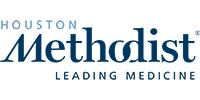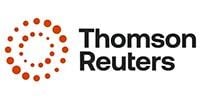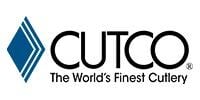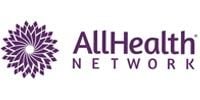Training
Proper and effective training is the foundation of contact center optimization.

How do you train a call center staff?

Training call center staff requires technical onboarding to ensure they know their way around your system and how to find the information they need to support callers. But it also involves training soft skills like call etiquette, listening, empathy, problem solving, and how to properly represent company culture and values.
Training a call center staff can occur either onsite or virtually, and it should include role-playing scenarios as well as other training modalities as appropriate for the support your staff is providing.
How can contact centers improve customer experience?
 Contact centers can improve their customer experience by more effectively giving customers what they want and expect from their interactions. To do so, you need to:
Contact centers can improve their customer experience by more effectively giving customers what they want and expect from their interactions. To do so, you need to:
- Know and understand your customers
- Pay attention to where they are in the customer journey
- Properly utilize technology
- Regularly monitor for quality
- Ask for customer feedback
- Provide ongoing coaching and training for your staff
What makes a good contact center manager?
 Good contact center managers are able to balance the customer experience given to the customer while also supporting their team with a good employee experience. Contact center managers must themselves be able to deliver exceptional customer service as well as be able to empower others, monitor and train staff, communicate effectively, solve problems, have patience and empathy, and remain positive.
Good contact center managers are able to balance the customer experience given to the customer while also supporting their team with a good employee experience. Contact center managers must themselves be able to deliver exceptional customer service as well as be able to empower others, monitor and train staff, communicate effectively, solve problems, have patience and empathy, and remain positive.
Why are call centers important for good customer experience?
 Call centers are important for delivering a good customer experience — and maintaining your organization’s reputation and competitive advantage — because they’re the frontline of interaction with the customer. Since customers get their questions answered, their problems solved, and their needs met through call centers, they are a vital component of any effective CX program.
Call centers are important for delivering a good customer experience — and maintaining your organization’s reputation and competitive advantage — because they’re the frontline of interaction with the customer. Since customers get their questions answered, their problems solved, and their needs met through call centers, they are a vital component of any effective CX program.
How do you handle customers in a call center?
 The most important thing to remember in handling customers in a call center is that they’re people who need some kind of help. And providing that help is the call center’s primary purpose. To that end, some things to focus on when it comes to managing the CX a customer receives include:
The most important thing to remember in handling customers in a call center is that they’re people who need some kind of help. And providing that help is the call center’s primary purpose. To that end, some things to focus on when it comes to managing the CX a customer receives include:
- Be professional but personable
- Be prepared
- Always be honest and truthful
- Listen and don’t interrupt
- Be respectful
- Be calm and positive
- Set proper expectations for the interaction
- Pay attention to detail
- Make them feel important
Customer Experience Management
Managing the customer experience (CX) is another aspect of contact center optimization. Providing an outstanding customer experience is how you not only build your company reputation, but also how you foster customer loyalty, improve retention, and increase repeat sales.

What is contact center customer experience?
 Contact center customer experience happens whenever a customer, client, or prospect interacts with your company via any communication channel. This includes phone calls, emails, live chats, text messages, social media messages, etc.
Contact center customer experience happens whenever a customer, client, or prospect interacts with your company via any communication channel. This includes phone calls, emails, live chats, text messages, social media messages, etc.
What are the required skills to work in the contact center?

Some of the skills required to be successful in a contact center include:
- Technical proficiency
- Effective communication — both in listening and speaking
- Empathy
- Attention to detail
- Patience
- Positive attitude
- Flexibility
- Friendliness
- Problem-solving
- Organizational
How do I optimize my contact center?
 Contact center optimization is achieved by focusing on providing an outstanding customer experience as well as an engaging employee experience. When your employees are engaged and empowered, they are more invested in — and more able to — provide the great customer experience that you want your company to be known for.
Contact center optimization is achieved by focusing on providing an outstanding customer experience as well as an engaging employee experience. When your employees are engaged and empowered, they are more invested in — and more able to — provide the great customer experience that you want your company to be known for.
Part of contact center optimization is the technology tools and systems, including the software solutions, you have in place that your staff use to do their job. Another part is the ongoing training and call coaching you provide your staff. And yet another part of optimization is quality monitoring to ensure that your center is getting it right, every time.
What are the four key features of a contact center?
 The four key features of a modern, multi-channel contact center are:
The four key features of a modern, multi-channel contact center are:
- Telephone
- Messaging and Chat Apps
- Web Conference / Video Calls
- Customer Data Analytics
Your training program should cover all four.
What makes a great contact center agent?
 A great contact center agent is someone who can solve a customer’s problem(s) and make them feel good about the company in doing so. They are empathetic, have excellent active listening abilities, and can clearly communicate both verbally and in writing.
A great contact center agent is someone who can solve a customer’s problem(s) and make them feel good about the company in doing so. They are empathetic, have excellent active listening abilities, and can clearly communicate both verbally and in writing.
Successful contact center agents also are calm under pressure, have great attention to detail, and don’t let anything shake their positive attitude.
Mystery Shopping & Competitor Analysis
Evaluating your performance, as well as knowing what your competitors are doing, are important elements of contact center optimization. The data collected provides insights and gives direction on setting your company apart and maximizing your success.

What does a telephone mystery shopper do?
 A telephone mystery shopper objectively evaluates the performance of a company’s call center or one of their individual locations. This evaluation is performed anonymously over the telephone.
A telephone mystery shopper objectively evaluates the performance of a company’s call center or one of their individual locations. This evaluation is performed anonymously over the telephone.
The mystery shopper is given a list of things to “grade” during their call, and then they submit their findings. The mystery shopper provides invaluable data, from a customer’s perspective, on just how well your company is handling customer service. They reveal what you’re doing well while also uncovering opportunities for improvement and letting you get ahead of any future issues.
How do I become a phone mystery shopper?
 Becoming a telephone mystery shopper starts with applying to join a Shopper Registry or company that provides mystery shopping services. Once your qualifications are confirmed, you’ll be offered specific mystery shopping gigs along with instructions on how to complete them.
Becoming a telephone mystery shopper starts with applying to join a Shopper Registry or company that provides mystery shopping services. Once your qualifications are confirmed, you’ll be offered specific mystery shopping gigs along with instructions on how to complete them.
What should be included in a competitor analysis?
 The purpose of a call center competitor analysis is to gain insight and learn more about the strengths and weaknesses of your competition’s customer service and overall customer experience in relation to your own. Therefore, you’ll want to include common elements of customer service and quality, put together in a standardized format to ensure that you’re evaluating the same things about each of your competitors.
The purpose of a call center competitor analysis is to gain insight and learn more about the strengths and weaknesses of your competition’s customer service and overall customer experience in relation to your own. Therefore, you’ll want to include common elements of customer service and quality, put together in a standardized format to ensure that you’re evaluating the same things about each of your competitors.
How do you start a competitor analysis?
 You start a competitor analysis by identifying your top competitors and strategically determining what you need to know about them. Carefully consider what data will give you the best insights about them … as well as the strongest advantage over them.
You start a competitor analysis by identifying your top competitors and strategically determining what you need to know about them. Carefully consider what data will give you the best insights about them … as well as the strongest advantage over them.
Often, it’s best to get a neutral third party to perform an unbiased competitor analysis. If you’re going to be outsourcing your competitor analysis, start there and let the company you hire guide you to save yourself the time and effort of figuring it out on your own.
What are the five steps to analyze your competitor?
 The five steps to a call center competitor analysis include:
The five steps to a call center competitor analysis include:
- Identify your competitors.
- Determine the data you want to collect.
- Gather the data (this step can include a process similar to mystery shopping).
- Review and analyze the data collected.
- Solidify your unique competitive advantage, including any action steps required to make you stand out even more and stay ahead of your competition.
Data Tracking, Reporting and Performance Monitoring
Data tracking, reporting, and performance monitoring — quality monitoring — is another critical piece of contact center optimization. Quality monitoring helps you review the customer experience your contact center is providing and ensure that it is the best it can be. It is how you proactively set yourself up for success by uncovering and rewarding what is going well while also discovering challenges and opportunities for improvement.

What do you track in a call center?
 You can track various metrics and KPIs, but it all comes down to evaluating customer experience and agent performance. This is critical data you need to ensure call center quality and maintain your competitive advantage.
You can track various metrics and KPIs, but it all comes down to evaluating customer experience and agent performance. This is critical data you need to ensure call center quality and maintain your competitive advantage.
So, some of the specific metrics to track include:
- Net Promoter Score (NPS)
- Customer Satisfaction (CSAT)
- Quality Assurance score (QA)
- Customer Effort Score (CES)
- Agent Effort Score (AES)
- First Response Time
- First Contact Resolution
- Average Speed of Answer
- Average Handle Time
- Average Waiting Time
- Average Hold Time
- Call Abandonment Rate
- Repeat Calls
- Customer Retention Rate
There are others that may also be relevant to you and your organization. The specific things you should track should correlate with your business goals and objectives.
How do you analyze data in a call center?
 To analyze call center data, you need to collect it into meaningful and relevant summary reports and dashboards that organize it to show insights which can then inform decisions.
To analyze call center data, you need to collect it into meaningful and relevant summary reports and dashboards that organize it to show insights which can then inform decisions.
Some of the ways to analyze your call center data include:
- Speech Analytics — using real-time transcription, AI, and machine learning to analyze call audio, voicemail messages, and IVR call menu responses
- Text Analytics — gaining insights from written data
- Interaction Analytics — focusing on interactions between call center agents and customers across all channels (voice calls, web chats, texts, emails, and social media DMs)
- Predictive Analytics — using historical data to predict future customer behavior
Becoming a telephone mystery shopper starts with applying to join a Shopper Registry or company that provides mystery shopping services. Once your qualifications are confirmed, you’ll be offered specific mystery shopping gigs along with instructions on how to complete them.
How do you measure contact center performance?
 The best way to measure contact center performance is a blend of tracking relevant performance metrics (see “What do you track in a call center?” above) and reporting them on Performance Scorecards combined with Customer Satisfaction Surveys to gather additional customer intelligence.
The best way to measure contact center performance is a blend of tracking relevant performance metrics (see “What do you track in a call center?” above) and reporting them on Performance Scorecards combined with Customer Satisfaction Surveys to gather additional customer intelligence.
The metrics you track in your quality monitoring program should be strategically chosen as pertinent to ensuring a reliable and positive customer experience throughout the entire customer journey – thereby increasing customer loyalty and retention.
How do you manage performance in a call center?
 To effectively manage performance in a call center, you must use the insights gained from the data you’ve collected to direct the appropriate training and call coaching that will support agents’ continued improvement as well as keep them motivated.
To effectively manage performance in a call center, you must use the insights gained from the data you’ve collected to direct the appropriate training and call coaching that will support agents’ continued improvement as well as keep them motivated.
Often, it’s helpful to include an official Employee Experience Program as part of your performance management strategy.
What is the best KPI for a call center?
 The most important KPI for any call center is the one that gives the most relevant and actionable insights to keep it operating at peak performance levels. In many cases, this is the CSAT — Customer Satisfaction — score or rating.
The most important KPI for any call center is the one that gives the most relevant and actionable insights to keep it operating at peak performance levels. In many cases, this is the CSAT — Customer Satisfaction — score or rating.
To determine the best KPI for your particular call center, it’s often helpful to talk to a third-party quality monitoring expert. To get in touch with us and personally discuss solutions that may be right for you, complete the convenient online form here or simply call 1-800-397-3515.
These Brands Trust ARC To Deliver Excellence and Innovation

















